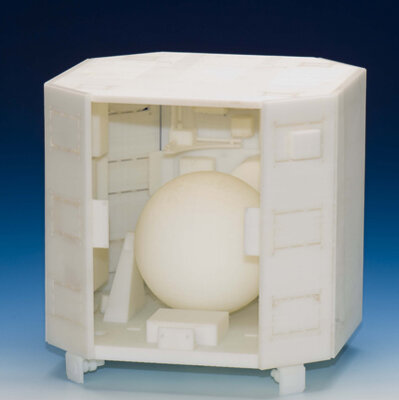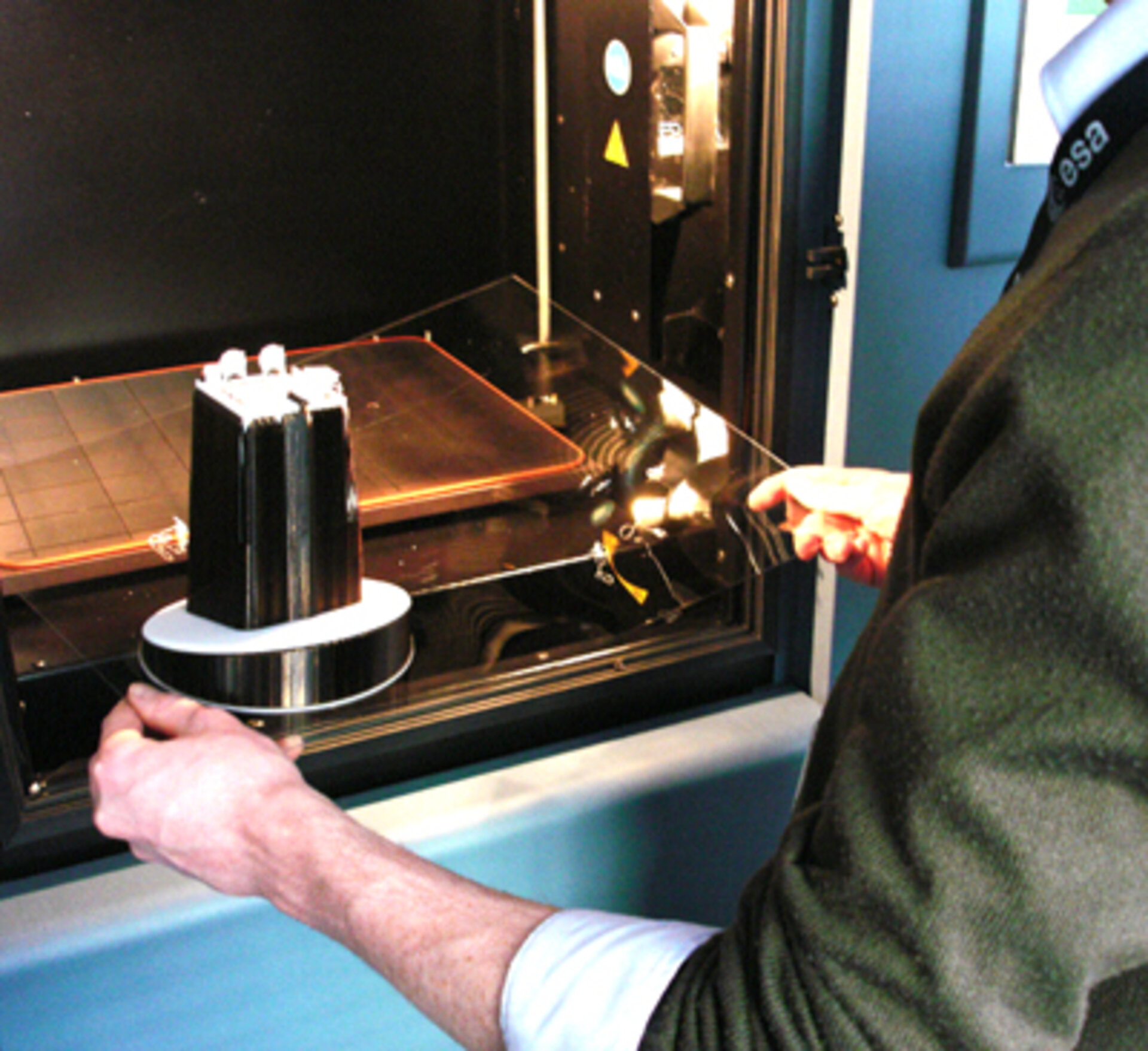Rapid Prototyping Technology in the CDF Gets a Boost
The ability to create prototype models of the system being designed is an important asset in the concurrent design process and for several years, the CDF unit and the ESTEC Mechanical Workshop have jointly owned a Rapid Prototype machine.
This machine, located in the ESTEC Main Mechanical Workshop, has recently been upgraded to a Stratasys Vantage (www.stratasys.com). This new machine is more of an industrial type with the ability to produce several different models at the same time.
The machine uses a Fused Deposition Modelling (FDM) process, whereby models are generated via successive deposits of plastic-based material in layers formed of minimal thickness 0.178 mm. Several deposition materials are available for this purpose, however ABS (Acrylonitrile Butadiene Styrene, a type of plastic) and polycarbonate plastics have been selected for use by the CDF and Workshop. In particular, polycarbonate offers the interesting property of no outgassing into vacuum, thus making it suitable for space application or for fast manufacturing of pieces designed for ESTEC’s Test Facilities.

This change of technology offers significant advantages in that it has improved the manufacturing process by reducing the manpower required by a factor 3 to 4 while only increasing the build duration by a factor 2. The software suite has also allowed for a more efficient preparation of the models by automating 95% of the build preparation and allowing it to be done remotely from the user’s office. Finally, the material is more resistant and higher levels of resolution can be achieved.

As with the previous machine, the use of Rapid Prototying allows the use of physical configuration models during CDF design sessions. This enables the study team to closely examine issues such as configuration, accommodation, and positioning of various equipment e.g. solar arrays, antennas etc. in a tangible context and consequently improve the design. These models are also an aid to view and simulate the spacecraft assembly process, with production of the final model also constituting an integral part of the CDF product.




